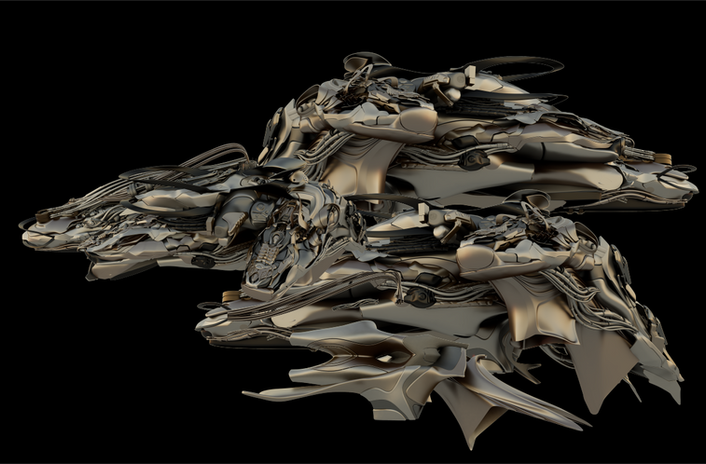



Design Morphine Masters 21/22
Manifesto
Everything humanity has designed so far, is limited and based on the way our bodies are designed and work, the way they experience reality around us. However, in this age and time, we have reached the crossroads where technology can and will eventually shape, not only our minds but our body, as well. In this sense, designing the future entails, first and foremost, designing the body that will live that future. Challenges inevitably arise and demand innovators and pioneers to overcome them; new tools and new technologies are required to materialize the answer; limits and boundaries will be crossed, and the equilibrium will change. In this journey, the compass will be a scalable notion of the human condition. Housing, transit systems, and the ways one moves around in the city, as well as, the whole structure of the city itself, are essential aspects one has to consider when designing for this new reality. By changing the very unit, the whole world is built around, the human body, we are no longer concerned with just designing parts of the world we live in. We are designing the whole world we live in. It’s not a mere design process, it’s cosmogony.
Credits, Students: Aatish Moon & Anett Kulcsar Alab Adviento & Mohammad Qamar Anthony Geara & Amandeep Sassan Simina – Ioana Dimcea & Jeanne Hermine Dekker Huan Kirk Lee Iulia Lichwar Ahmed Al-Naseri & Kyle Root Assem Attia & Joost Helfers Kshitij Nashine Abdullah Khan Deeksha Basawaraj Alice Kaori McDonald & Samuel Carrillo Lacouture Nadezhda Kutyreva & Pedro Venegas Rodríguez Julieta Guillemet Fatima Al Doukhi & Xinyue Li Elena Koufopavlou & Brian Berk Eva Hafeez & Arantxa Nava Deane Collins & Francisco Nasar Naresh Kumar Thanigaivel Walter Smith Manoj Sikhaholli & Pradeep Kumar
The Learning Experience
The Master's schedule is split into five leading Design Chapters and five supporting Technical and Theoretical Labs that span over the 9-month long academic year. Throughout them, students will encounter and learn advanced techniques and design processes from world-renowned designers and architects. During the Design Chapters phase, they will start with the generation of a single unit and its new features, i.e. the enhanced human body, and will then progress to develop more complex architectural entities around that, reaching the state to build global systems and networks. Through the Technical Labs, students will master a variety of software for parametric and generative design, like Maya, ZBrush, Rhinoceros, Grasshopper, Houdini, Unreal Engine, C#, etc, as well as get to utilize Virtual Reality, visualize their concepts through the Media Lab, and work with Prototyping Machines and Swarm Robotics. Furthermore, students will be taught how to formulate a concrete, expandable theoretical frame to support their vision. At the end of each monthly cycle of lessons, participants will present their work and discussion will follow. Mentors and Acclaimed Designers will be called to participate and provide a fresh perspective. At the end of this journey, students will have obtained a variety of skills, allowing them to be ready to take on any project in any working environment.
Credits, Students: Aatish Moon & Anett Kulcsar Alab Adviento & Mohammad Qamar Anthony Geara & Amandeep Sassan Simina – Ioana Dimcea & Jeanne Hermine Dekker Huan Kirk Lee Iulia Lichwar Ahmed Al-Naseri & Kyle Root Assem Attia & Joost Helfers Kshitij Nashine Abdullah Khan Deeksha Basawaraj Alice Kaori McDonald & Samuel Carrillo Lacouture Nadezhda Kutyreva & Pedro Venegas Rodríguez Julieta Guillemet Fatima Al Doukhi & Xinyue Li Elena Koufopavlou & Brian Berk Eva Hafeez & Arantxa Nava Deane Collins & Francisco Nasar Naresh Kumar Thanigaivel Walter Smith Manoj Sikhaholli & Pradeep Kumar


























